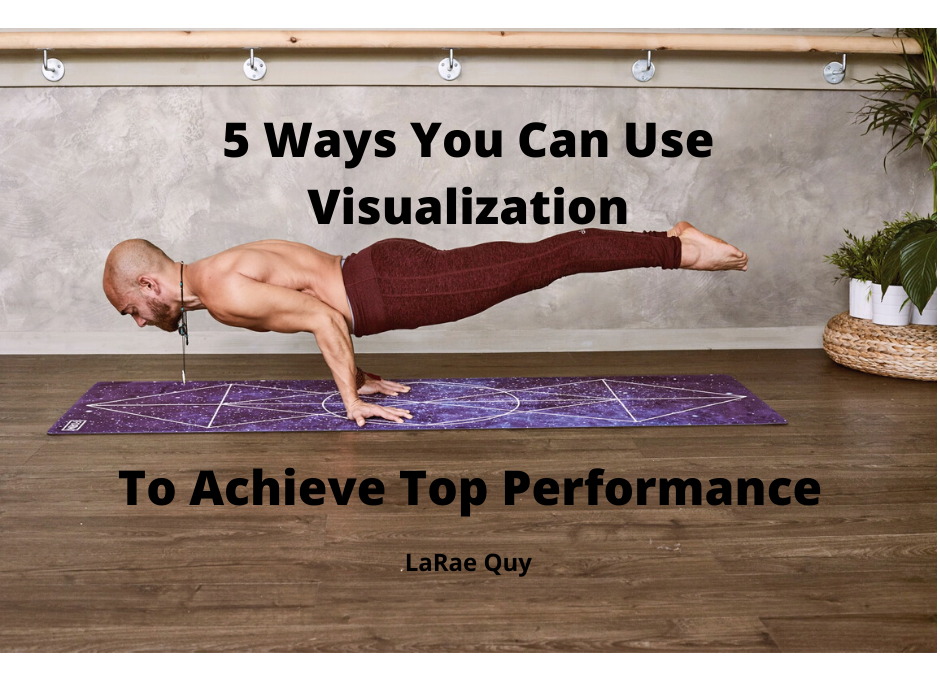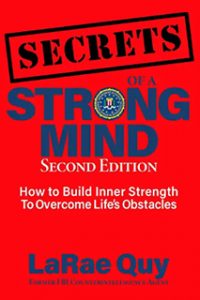I’ve always been afraid of water. To confront those fears, I decided to learn how to scuba dive, even before I learned how to swim! I would use visualization to achieve top performance if I hoped to get out alive.
One of the requirements of a scuba dive certification is to descend ten feet underwater, take off your mask and mouthpiece, and then put them back on again. I was afraid I would drown in those few moments underwater and without oxygen.
What if I lost my mask? How would I get back to the surface? After all, I couldn’t even swim. My instructor was with me, and during practice, he helped me several times. On the day of certification, however, I would need to do it all on my own.
My fear of water had not subsided as I hoped it would. I did not feel safe in the water, especially when I was ten feet under.
The night before the test, I walked myself through the exercise many times. How could I use visualization to achieve top performance in my situation? Here were my steps: 1. Take a deep breath and let go of my mouthpiece. 2. Pull off the mask with my left hand and hold it tightly as my right hand came around and pulled it back over my face. 3. Keep salt water out of my eyes by keeping them tightly closed. 4. Grab hold of my mouthpiece and bring life-giving oxygen back into my lungs.
I visualized the sequence dozens of times. And when it came time for my scuba dive certification, I performed the underwater portion exactly as I had visualized it. Two days later, I dove 100 feet down a seawall!
I’m a hard-nosed realist who used to look at things like visualization as woo woo New Age. Little did I know at the time that I could use visualization to achieve top performance and point to solid science to explain why it worked. Achieving my goal was about more than work and discipline—it was also about physiology.
Whenever we use visualization to achieve top performance, our brain releases a neurotransmitter called dopamine. That is the chemical that becomes active when we encounter situations that are linked to rewards from the past. Dopamine enables us to not only see rewards but also to move toward them as well. So every time we visualize our achievement, our brain stores that information as a success.
Visualization goes beyond my example of scuba diving. Here are 5 ways you can use visualization to achieve top performance:
1. Clarify What You Want
This is more important than most people think because once we identify the things that are important to us, it’s easier to notice them. Once we have clarity about our goals, we start to look for ways to accomplish them. Opportunities might have been there all the time but we didn’t look for them, so we didn’t see them.
When you visualize your goals, it forces you to get serious about what you want. Otherwise, there is nothing to visualize but a bunch of half-baked dreams about your future. Visualization takes a hazy idea and turns it into a clear goal. It’s more than a quick fix.
How To Make It Work For You: Clarity requires precision, so it doesn’t do any good to be content with vague ideas of how you want to live your life. Vague goals sound a lot like this:
- I want to be rich.
- I want to travel the world.
- I want to be respected.
This is the pseudo-goal crap that will never lead you to success because it’s not based in reality. To gain clarity, you will need to sit down and think about how you want events or relationships to unfold, exactly where you want to end up, and exactly what you need to do to get there.
2. Get Specific
When you use visualization to achieve top performance, you see your own ability to perform in difficult or stressful situations. It can help move you beyond your current circumstances. Visualizing encourages leaders to ask “What if?” or “What else?” These types of questions open doors of possibility and opportunity. It’s an invitation to move past the status quo.
The very act of giving your brain a detailed and specific portrait of your end goal ensures the release of dopamine, a powerful tool to steer you toward success. If dopamine is associated with rewards, leaders can use this knowledge to help their teams find ways to create a more satisfying work environment. Research has determined that dopamine is produced in anticipation of reward, not as the result of the reward.
How To Make It Work For You: Visualizing the outcome of an event is enough to trigger the production of dopamine. Ask yourself a simple question such as “What do I want this meeting to look like?” and then visualize your performance. Visualize every objection and/or question that is likely to come up in the meeting, and your response to it.
If you want to use visualization to achieve top performance, you will need to visualize the entire process—the beginning, middle, and end. Take your mind through a situation and simulate how you plan to start, what you will experience, and how you will do it.
3. Remove Uncertainty
Uncertainty can rear its ugly head at any time. It may be rooted in a lack of confidence, lack of experience, or self-limiting beliefs. It is impossible to use visualization to achieve top performance if we move forward with a timid heart and weak voice.
The FBI Academy taught me to respect uncertainty when it popped up in stressful situations. I never ignored it; instead, I found ways to break its crippling cycle of repetition. It was essential for my job as an FBI agent.
It’s also important for your job as a leader, entrepreneur, or business owner. Your confidence is a by-product of your success, not the cause of it. Uncertainty can sabotage your best efforts to move forward unless you nip it in the bud.
How To Make It Work For You: The more familiar you become with the situations, conversations, or events that produce your uncertainty, the calmer you will be able to approach the situation. Grit up and acknowledge your doubts so you can excavate the significance of their timing.
Write down when you experience uncertainty. Explore what triggers it. Trace the roots all the way back to childhood if needed.
4. Experience The Right Emotions
Emotions are very important if you want to use visualization to achieve top performance. Your brain learns better with emotions. The memories and experiences that are freighted with emotions stick in your mind. Visualization is a mental simulation of your future performance so you need to cast the right emotion into the equation.
The idea behind visualization is to plant false, but positive memories into your brain. To be successful, you must remain positive. Your brain will perceive your future performance as more achievable if they are accompanied by a positive emotion.
How To Make It Work For You: When you use visualization to achieve top performance, you’re better prepared for it in real life. You will feel prepared because you’re doing something you’ve already rehearsed many times in your mind. Here are some tips:
- Don’t give negative emotions the space to fester.
- Feel positive emotions like enthusiasm, pride, happiness, and satisfaction every step of the way.
- Let them become ingrained in your psyche.
- Don’t ignore the obstacles, but don’t give negative emotions the space to fester.
- Visualize the obstacles you expect to encounter so you’re prepared for them.
- Imagine what it will feel like when you succeed.
From Victor Frankl: “There’s one reason why I’m here today. What kept me alive in a situation where others had given up hope and died was the dream that someday I’d be here telling you how I survived the concentration camps. I’ve never been here before. I’ve never seen any of you before. Nor have I ever given this speech before. But in my dreams, I’ve stood before you in this room and said these words a thousand times.”
Like Frankl, you can be successful because you’ve done it a hundred times before—if only in your mind.
5. Visualize Massive Success, But Never Fantasize
There is an important caveat about visualization—never fantasize. Your brain is smart enough to tell the difference between peak performance and fantasy. A study published in the Journal of Experimental Social Psychology suggests that positive fantasies can actually sap energy.
The same study found that shifting into fantasy mode is most effective when we need to decrease our energy because anxiety is getting the better of us.
How To Make It Work For You: You can dream of becoming a rock star, but make sure you have the talent to make it happen. It’s great to have dreams, but have the self-awareness to know the difference between you at your very best and a fantasy version of what you dream of becoming in life.
© 2019 LaRae Quy. All rights reserved.
You can follow me on Twitter, Facebook, Instagram, AND LinkedIn
Are you mentally tough? Take this evidence-based, FREE Mental Toughness Assessment
Check out my new online training program at www.SecretsOfAStrongMind.com
Get my new book, “Secrets of a Strong Mind (second edition): How To Build Inner Strength To Overcome Life’s Obstacles”
Author of “Mental Toughness for Women Leaders: 52 Tips To Recognize and Utilize Your Greatest Strengths”






LaRae, I love the weave of your personal example of overcoming the fear of water – mixed with Viktor Frankl’s surviving a concentration camp and speaking about it. Powerful to realize that fear is fear. And we can let it control us or we can leverage it as an opportunity to grow and use it for good.
Fantastic post LaRae! I love your point about visualizing the outcome of an event to help make sure we move in the right direction. I do this often as it helps me see the big picture of a presentation or workshop. Once I can see where I am headed I am half-way there.
Thanks!
A very helpful article. Thanks LaRae!
Glad you liked it Robert!
Another brilliant, practical, and helpful and supportive article, Q!
I like the way you make things real and not pie-in-the sky dreamy stuff.
Thank you again for sharing your experience and insight and for the continued engagement.
Sincerely,
M.